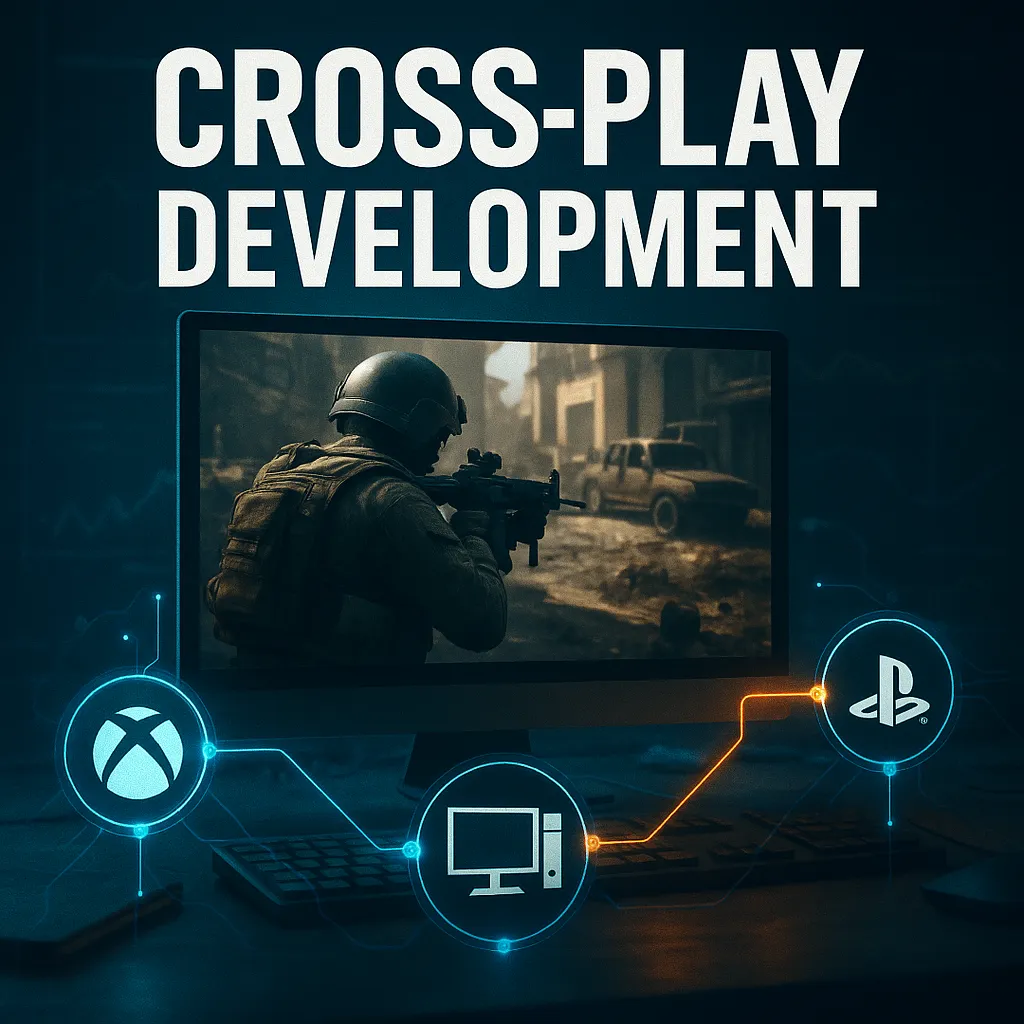Console cross-play used to be a dream. Now, it’s practically a standard. But bringing it to life — especially in a high-intensity tactical FPS like Insurgency — is anything but easy. This is the story of how Pingle Studios, working with New World Interactive, made it possible for players across Xbox, Microsoft Store, and eventually more platforms to join the same battlefield.
Whether you’re a dev planning your own cross-play feature or just curious about what goes on under the hood, here’s how it really gets done — complete with all the real-world complications no one talks about.
Why Cross-Play Matters in 2024
Insurgency: Sandstorm has built a dedicated fanbase with its brutal realism, immersive gunplay, and team-focused tactical gameplay. Originally a PC-first experience, its expansion to PlayStation 4, Xbox One, PS5, Xbox Series, and the Epic Games Store required not just porting, but redesigning core systems to work seamlessly across platforms.
Cross-play was one of the most requested features — and for good reason. It boosts player count, improves matchmaking, and increases game longevity. Once Insurgency hit Xbox Game Pass, the user base tripled or even quadrupled in size, making cross-play even more essential.
Step-by-Step: The Cross-Play Development Pipeline
Pingle’s cross-play integration wasn’t just a patch job. It was a multi-month pipeline involving new systems, UI changes, backend configuration, certification compliance, and extensive testing.
Here’s a breakdown of their development phases:
- Scope Definition — Evaluate platform-specific needs and already-existing systems.
- Certification Review — Each platform has unique requirements.
- Time Estimation — Targeted 2–3 months for development and QA.
- Implementation — Build features for real-world use.
- Polishing — UX, UI, and performance fine-tuning.
- Testing — Simulate cross-device usage and edge cases.
- Certification — Compliance with platform regulations.
- Release — Package and deploy cross-play in public update.
Key Systems Developed for Cross-Platform Integration
Let’s walk through the technical side of things. Cross-play isn’t just about matchmaking — it involves input control, party logic, UI recognition, and region-specific compliance.
Cross-Input Device Support: Gamepad vs. Keyboard & Mouse
The first big hurdle? Adding keyboard and mouse support on Xbox consoles. The original port was gamepad-only. Retrofitting mouse and keyboard functionality meant overhauling input detection, UI prompts, and interaction logic.
The devs also implemented a selection system allowing Xbox users to choose between control methods. These choices had to be:
- Saved to user profiles
- Recognized by the engine before the device is used
- Reflected in UI and hints automatically
Surprisingly, the Unreal Engine didn’t support keyboard detection on Xbox natively, so Pingle built that system from scratch.
Cross-Platform Matchmaking Backend
A huge part of cross-play is letting users decide who they want to match with:
- Xbox-only
- PC-only
- Cross-platform
This required backend changes to make the matchmaking service respect:
- Platform
- Input method
- Cross-play toggle
The result? A smarter matchmaking system that avoids lopsided advantages (e.g., mouse users dominating controller lobbies) while still keeping wait times low.
Cross-Party System: Invite Across Platforms
Another crucial feature was a cross-party system that let players group up regardless of platform. The system checks:
- If a party leader allows cross-play
- What input devices are used
- Whether users meet certification rules per platform
If users mismatch on any of those conditions, they get clear prompts and options — minimizing friction and avoiding silent errors.
Region-Specific Requirements: The Japan Twist
Supporting multiple platforms means dealing with global compliance — and Japan has its own unique rules.
In Japanese regions:
- Blood and dismemberment must be disabled
- Platform-specific UI (e.g., confirm button = circle on PS4) must be honored
This forced Pingle to create region-aware builds that activate based on time zone — something rarely discussed in cross-play architecture but critical for legal compliance.
Adaptive Tech for Next-Gen Consoles
Pingle didn’t stop with backward compatibility. On PlayStation 5, they added:
- Adaptive trigger functionality
- Enhanced haptic feedback
- Custom “activities” for quicker session join
- TRC-compliant spectator mode
Each of these required platform-specific API work and additional test cases — a reminder that console parity doesn’t mean “one-size-fits-all.”
Ensuring Parity Across Microsoft Store, Steam, and Epic
Another challenge: getting the Microsoft Store version of Insurgency to match Steam and Epic in terms of features.
This meant porting over:
- Community servers
- Mod support
- Backend entitlements
Microsoft Store was treated as an independent PC platform with its own ecosystem. Ensuring parity involved integrating mod management and sync tools while preserving cross-play compatibility with Xbox consoles.
Takeaways for Other Devs
Here are five major lessons from Pingle’s experience:
- Plan for multiple input methods early. Don’t assume gamepad-only.
- Save user preferences persistently. Input settings and cross-play toggles shouldn’t reset on every boot.
- Build platform-aware systems. What works on Steam might not pass on Xbox or PlayStation.
- Test like a maniac. Cross-party systems create exponential complexity. Test all combos.
- Cert is a beast. Start early, document everything, and leave time for resubmissions.

